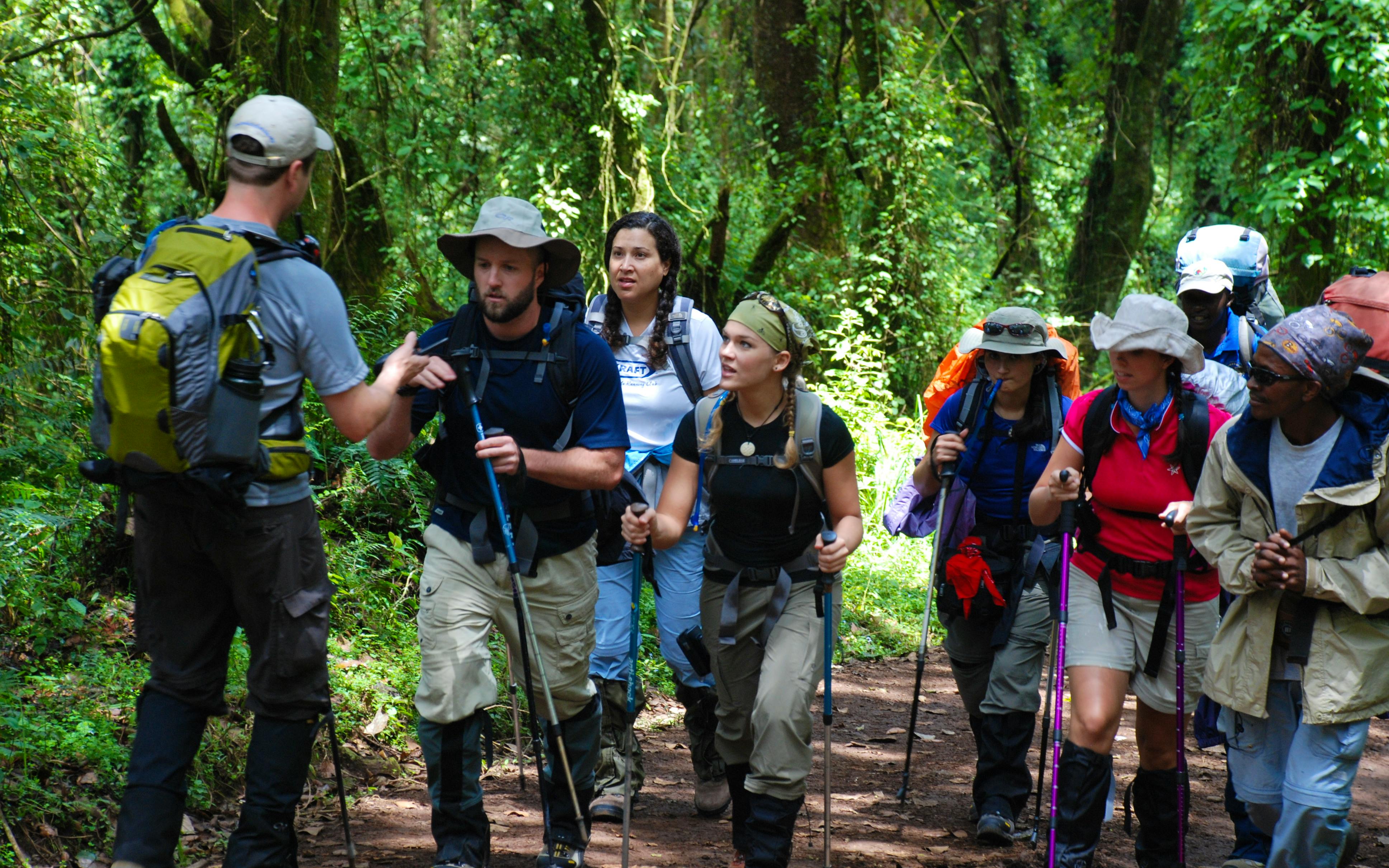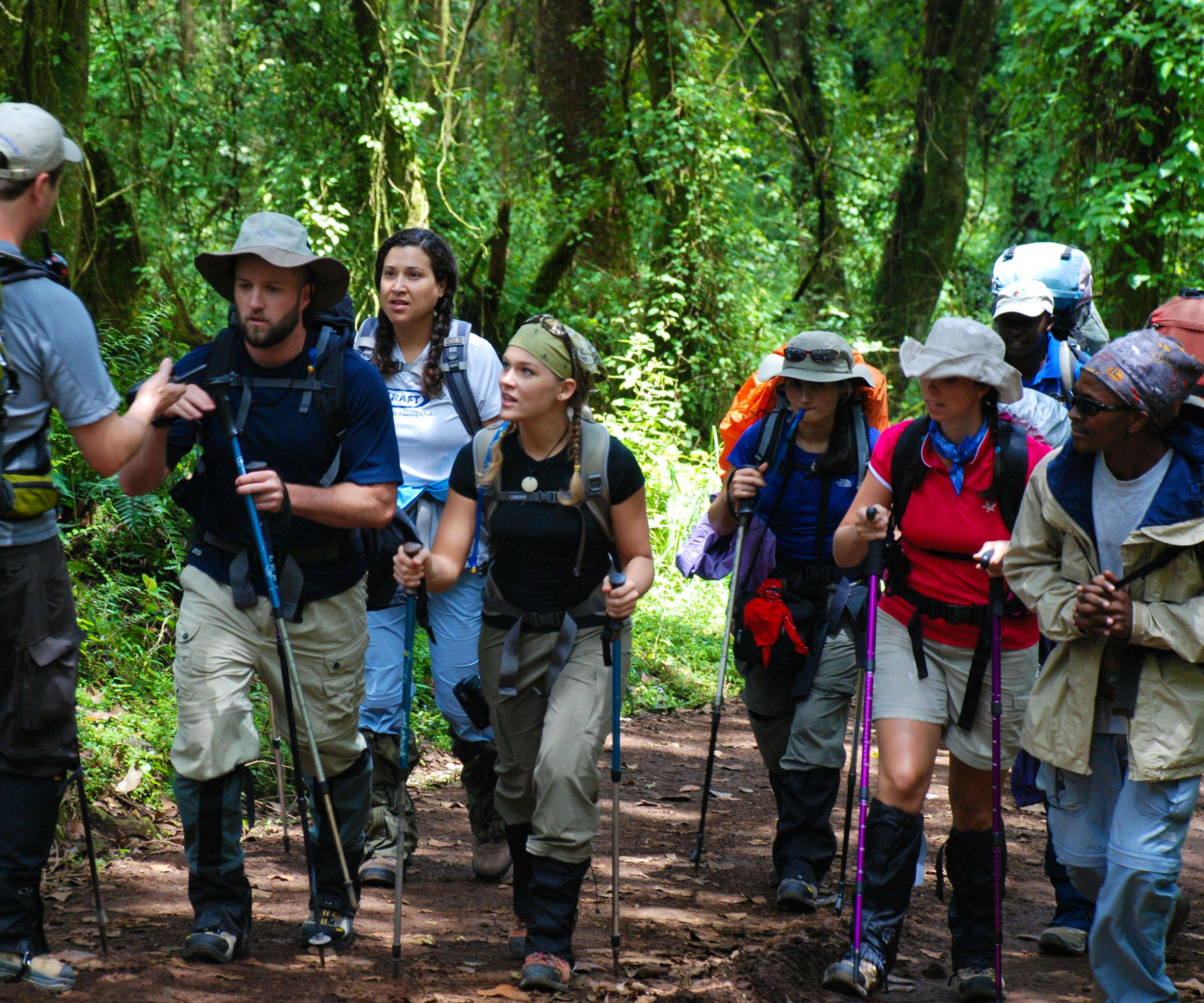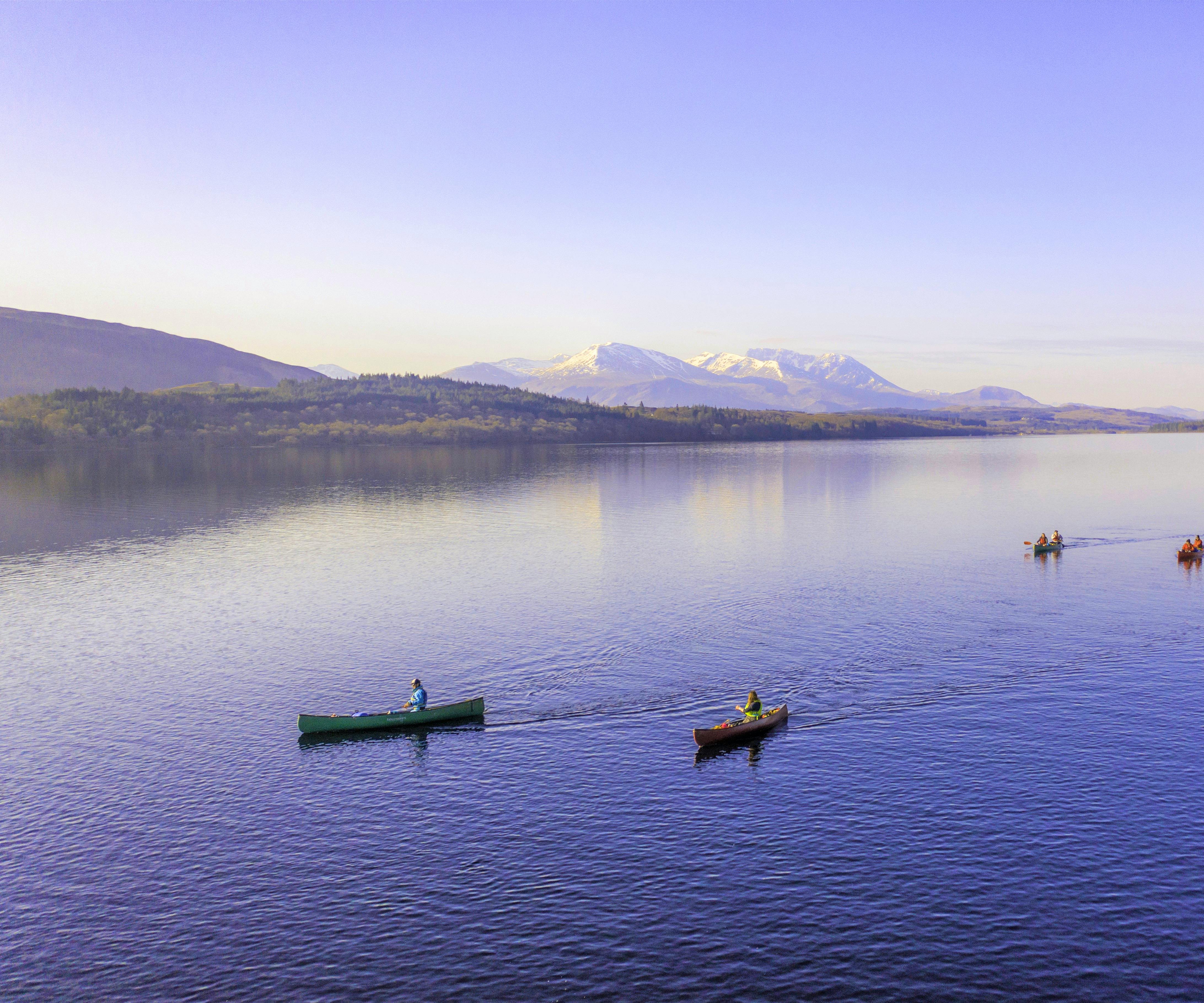Is Climbing Kilimanjaro Worth It? Unveiling The Perks Of Africa's Highest Climb
Is climbing Kilimanjaro worth it, you wonder? If you’re enticed by the thought of breaking a sweat, enduring the grind, and gasping for breath at dizzying altitudes on Africa's crown jewel, you've come to the right place.
And at Skyhook, we're not just pointing fingers at the mountain - but taking you up there on superb Kilimanjaro guided trips with our trusted local crews.
Here's why we believe Kilimanjaro is worth climbing!
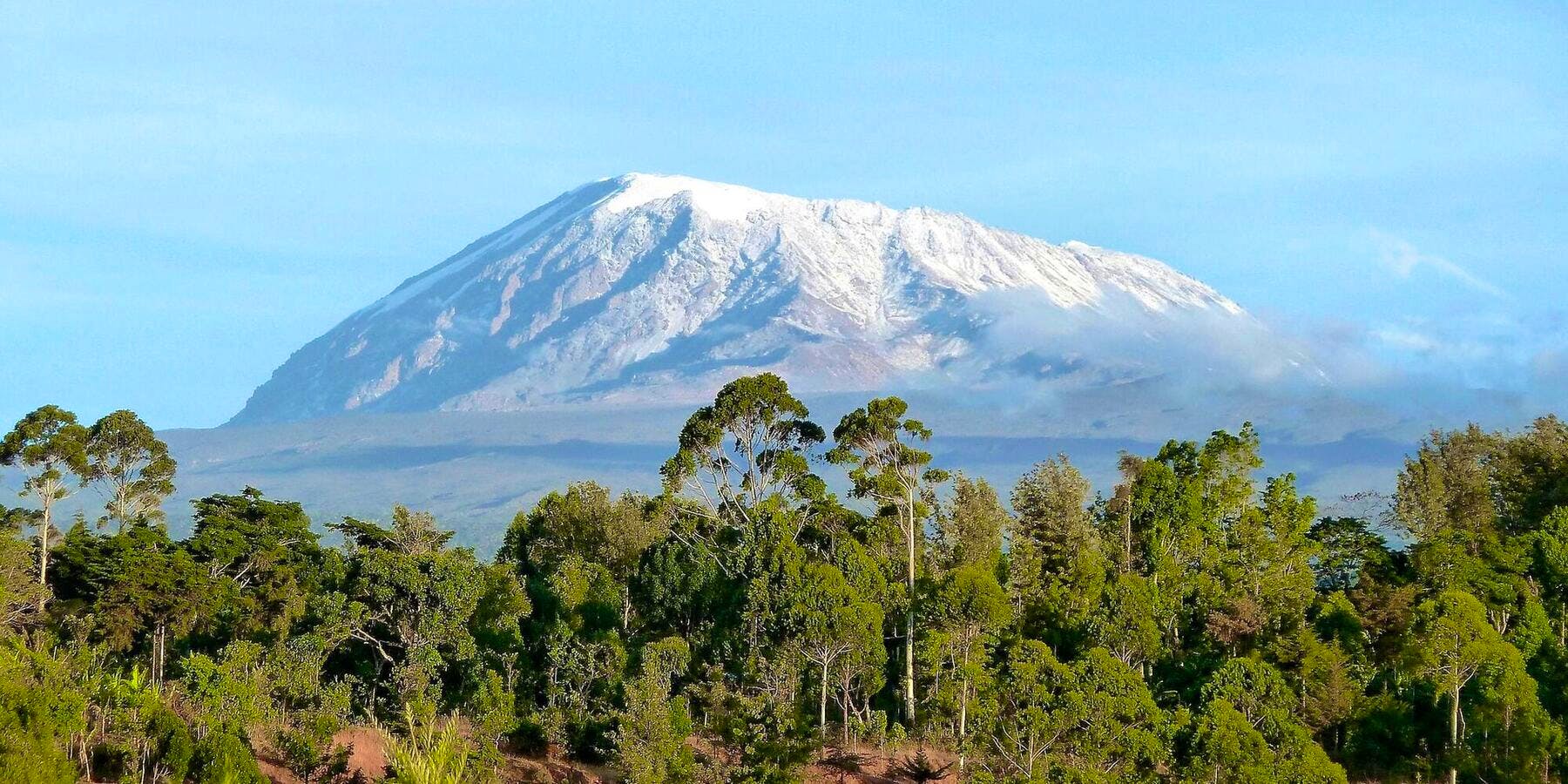
Interesting Facts About Kilimanjaro
How Kilimanjaro looks from the base
Mountains are worth climbing when you have a little background - so you need to know the best Kilimanjaro facts before climbing.
Mount Kilimanjaro stands tall at a whopping 5,895 meters (19,341 feet) above sea level in Tanzania. And the mountain isn't your ordinary giant rock – it's a dormant stratovolcano boasting three distinct volcanic cones: Kibo, Mawenzi, and Shira.
Also, the name Kilimanjaro in Kiswahili means "Mountain of Greatness?" You will feel the greatness of this mountain once you take one of our trips to Kilimanjaro Uhuru Peak, and stand at the highest point in the entire African continent.
Moreover, Kilimanjaro hosts a vibrant mix of flora and fauna, surprising considering its high-altitude setting. No wonder it's earned the UNESCO World Heritage Site badge – a nod to its ecological importance on a global scale.
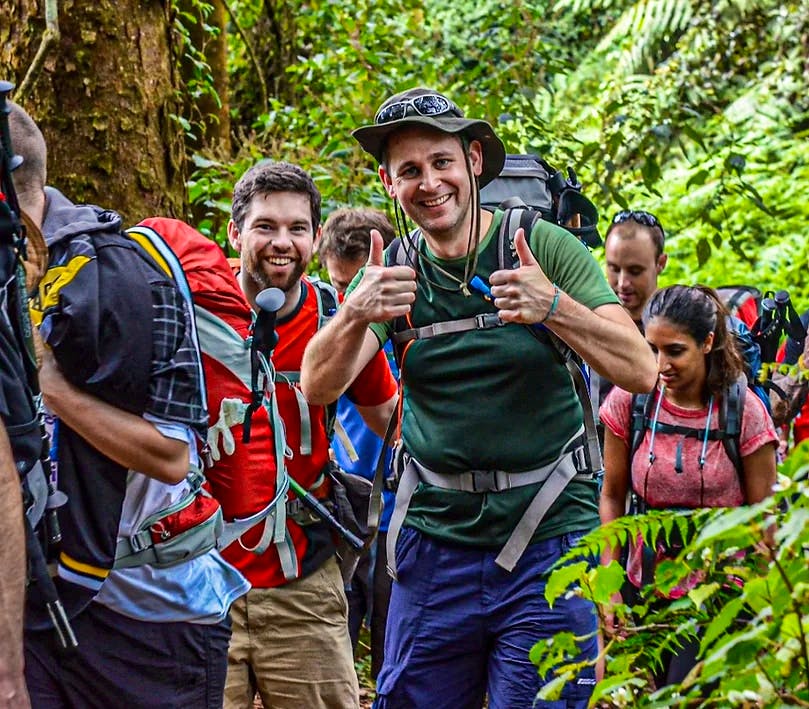
Why Climb Kilimanjaro?
Happy hikers taking on Kili, as the mountain is commonly called.
1. It's Accessible
If your bucket list of mountains to climb includes dominating the world's top peaks, then Kilimanjaro must be one of your considerations. As one of the Seven Summits, Kilimanjaro is the most accessible peak for hikers.
Firstly, Kilimanjaro's location in Tanzania facilitates relatively easy access. No complex logistical challenges, political restrictions, or extreme weather conditions exist. This ease of access is a notable contrast to the other Seven Summits.
For instance, you get different experiences with Everest Base Camp vs. Kilimanjaro, where factors like remote locations and pretty extreme climates pose additional hurdles.
In addition, the variety of routes up Kilimanjaro caters to different preferences and skill levels.
From the relatively straightforward Kilimanjaro Marangu route to more challenging paths like the Machame Kilimanjaro route, you can choose a route that aligns with your capabilities.
Moreover, Kilimanjaro doesn't demand specialised mountaineering skills or technical expertise. The are no complex ice and rock climbing demands that are common in other Seven Summits.
This means that Kilimanjaro is accessible to a broader range of climbers, an inclusivity that contributes to its popularity among seasoned mountaineers and those embarking on their first significant summit attempt.
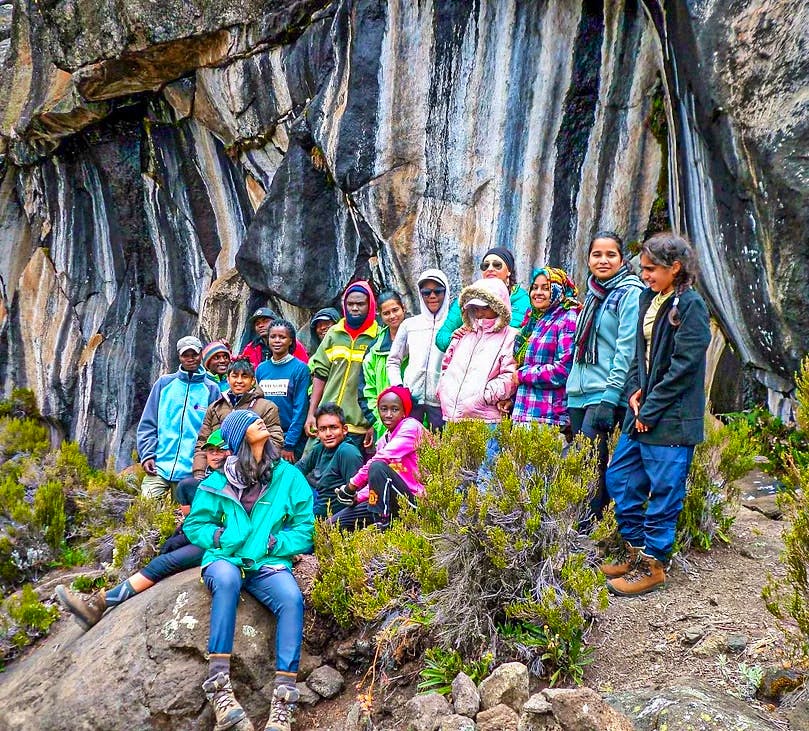
2. Alluring Scenery
Your Kilimanjaro trek begins in lush rainforests, where vibrant foliage, Kilimanjaro animals, and a cacophony of birdlife create an immersive experience. As you ascend, the landscape transforms into heath and moorland, revealing a different facet of Kilimanjaro's natural beauty.
Along the way, you'll encounter iconic landmarks such as the Shira Plateau, offering expansive views and a sense of the mountain's vast scale. Zebra Rock, a striking geological formation, provides a unique photo opportunity with its distinct, zebra-like stripes.
The alpine desert, with its otherworldly expanse, adds a touch of surrealism to the climb. Picture vast, barren landscapes juxtaposed against the backdrop of towering peaks. It's a stark but mesmerising beauty that challenges the notion of what an African mountain should look like.
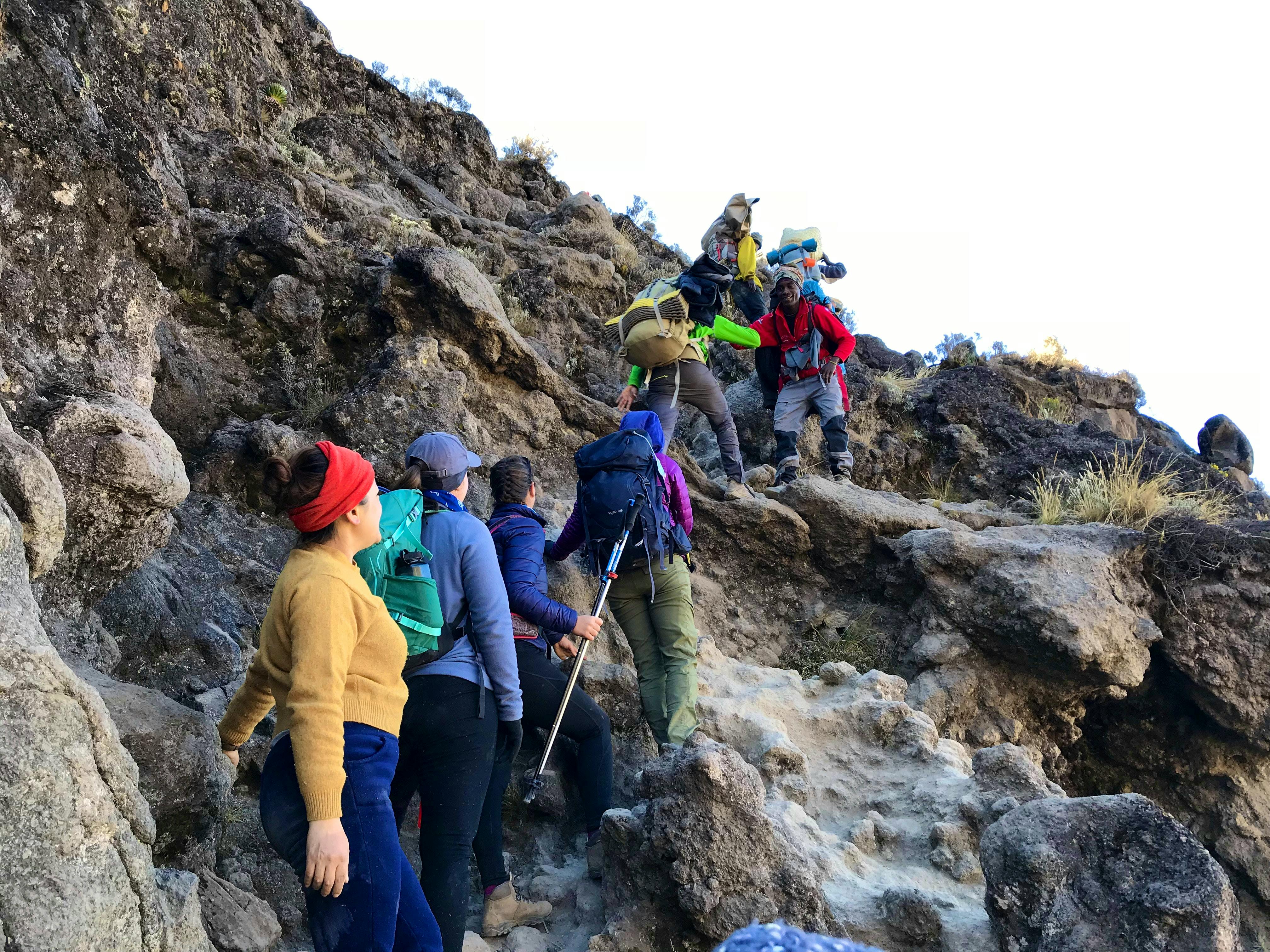
The Barranco Valley and Wall present a thrilling challenge with their steep paths and breathtaking vistas, adding an element of adventure to your journey.
Approaching the summit, you encounter glaciers and snowfields. The contrast between the sun-baked lower slopes and the icy crown of Kilimanjaro is a visual spectacle that transcends your expectations.
The grand finale at Uhuru Peak, with its panoramic Kilimanjaro views, provides a canvas of Africa spread out below. The sunrise from the summit is a moment of pure magic as the sun bathes the vast plains in a golden glow.
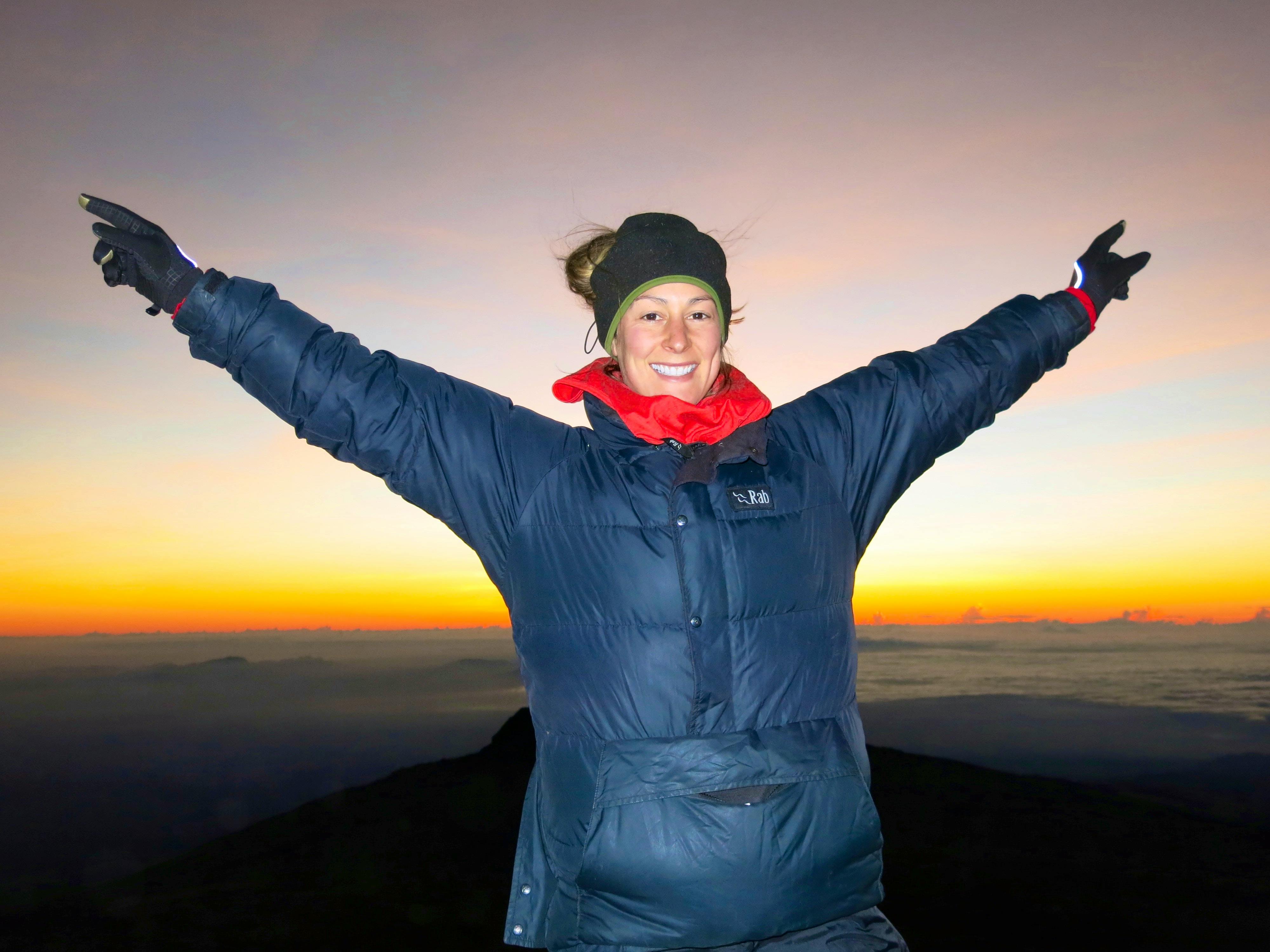

Latest Deals
3. Conquering the Giant of Africa
One question we often hear is: how hard is Kilimanjaro to climb? Our answer is Kilimanjaro is not hard to climb. But it isn't a stroll in the park either.
The altitude, varied terrain, and the long Kilimanjaro hike time demand a level of fitness and stamina. Each step will test your physical capabilities, pushing you to confront your limits. The thinning air adds an extra layer of difficulty, making every breath a conscious effort.
Our advice? Prepare with our training plan for Kilimanjaro to get you started!
When climbing Kilimanjaro, the mental challenge is equally formidable. The mountain's ascent is a psychological maze, navigating through doubts, fatigue, and maybe a relentless urge to turn back.
The strain and resilience Kilimanjaro demands during the climb make it a transformative experience. It's a journey that reshapes your body and mind.
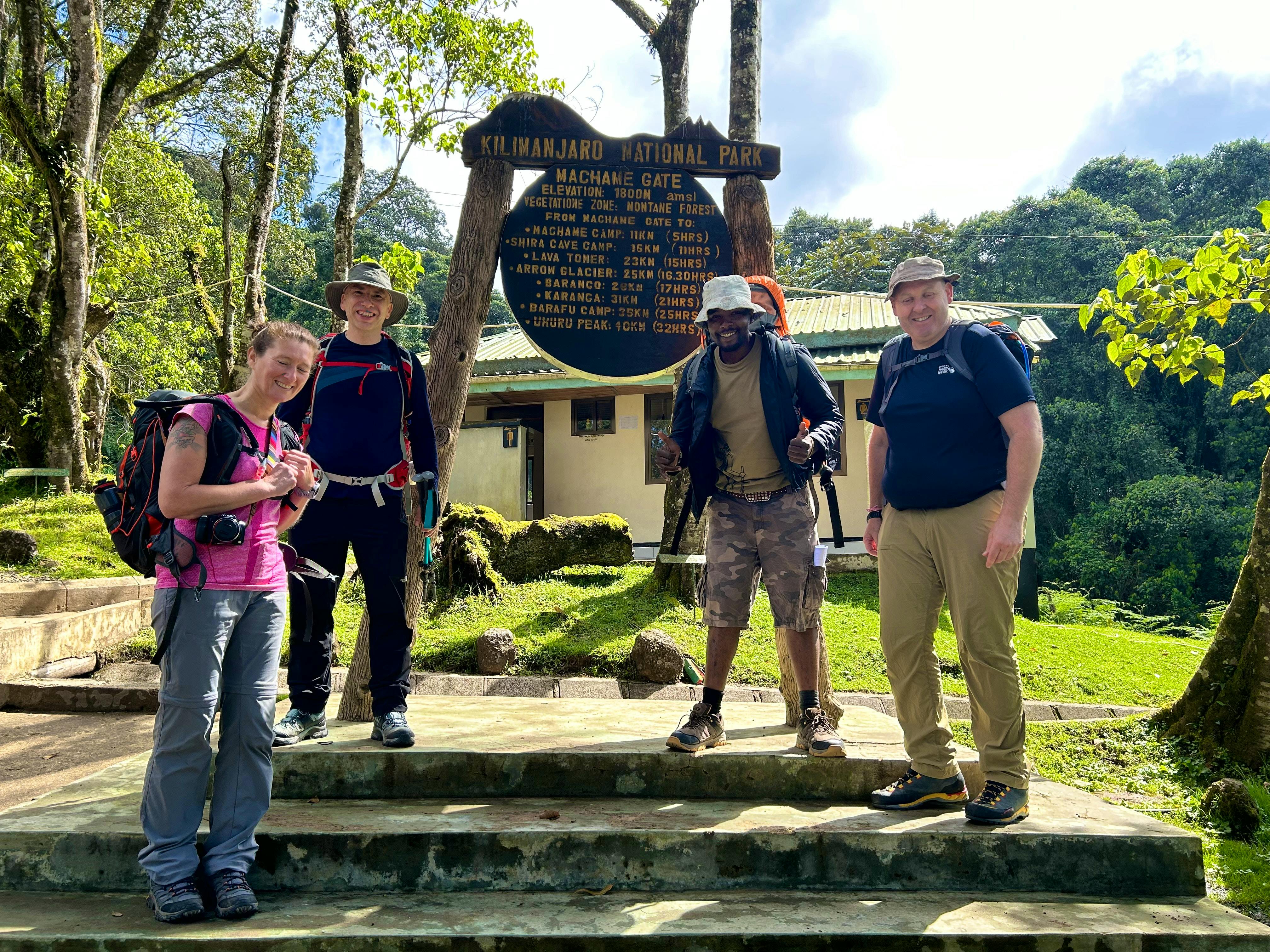
4. Rich Cultural Experience
The cultural experience of climbing Mt Kilimanjaro elevates the hike's worth beyond the physical and scenic aspects.
As you travel the lower slopes of Kilimanjaro, you'll encounter the Chagga people and get a glimpse of their daily lives. Passing through villages, you witness the warm hospitality of a community deeply connected to the mountain.
Moving higher, the Maasai herders bring another layer to the cultural tableau with their distinctive attire and traditional way of life.
Their presence on the slopes of Kilimanjaro challenges preconceptions and adds a unique dimension to the trek. You will form genuine connections, share great moments, and experience the diverse cultures that coexist with this towering mountain.
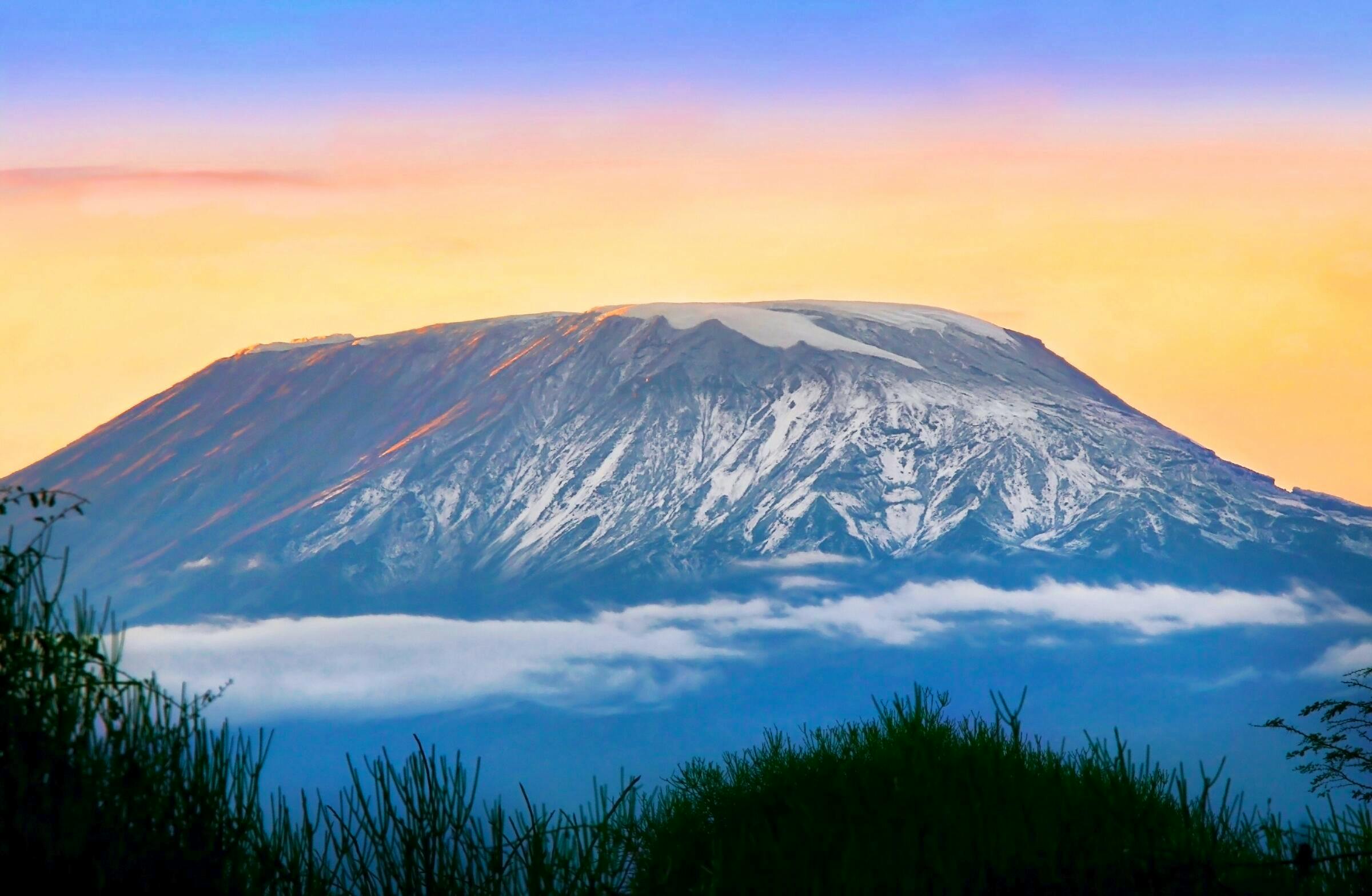
5. Witness the Glaciers While They Last
One compelling reason to climb Mount Kilimanjaro is the opportunity to witness its majestic glaciers before they vanish. Over the last century, the ice coverage has shrunk by over 90%, and estimates suggest that most ice could be gone by 2040.
This dramatic reduction in glacier size is primarily due to decreased precipitation and increased solar radiation, leading to more sublimation of the ice.
Yet, the glaciers are a testament to the mountain's geological and climatic history. As you trek towards the summit, the sight of these ancient ice formations is awe-inspiring and poignant.
Climbing Kilimanjaro now offers a unique chance to experience these glaciers firsthand. This makes the journey a physical challenge and a rare encounter with a rapidly changing natural wonder.
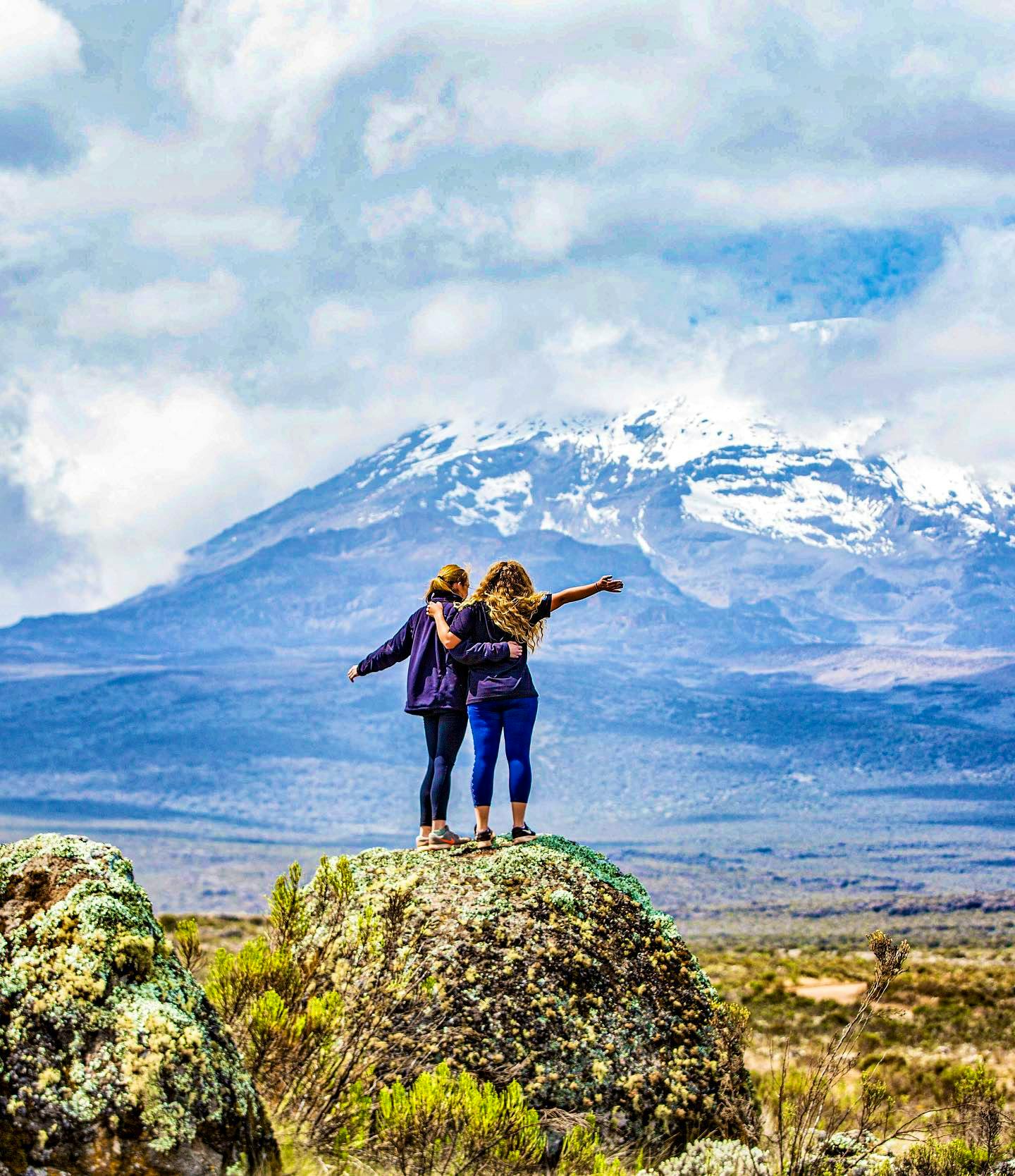
Cost of Climbing Kilimanjaro
Let's face it: when you're gearing up for Kilimanjaro, you've got a few things to consider, especially the overall cost of climbing Kilimanjaro. This includes booking your trip, grabbing those permits, getting the right gear, and having a guide to show you the ropes.
Not to worry, though; at Skyhook, booking a Kilimanjaro trip is seamless, and our trusted local crews will take care of everything else, including permits.
Permits to climb Kilimanjaro are a significant portion of the cost, accounting for access to the mountain and its diverse ecosystems. These fees contribute to conservation efforts and maintaining the sustainability of the trek.
Gear and equipment? Well, that's your gear squad – everything from the right threads and solid hiking boots to a cosy sleeping bag and trusty trekking poles. Quality gear for Kilimanjaro ensures comfort and safety on this adventure.
Also, there's no climbing Kilimanjaro without a guide. Our trusted guides provide expertise on the route, help you to navigate challenges, and enhance the overall experience.
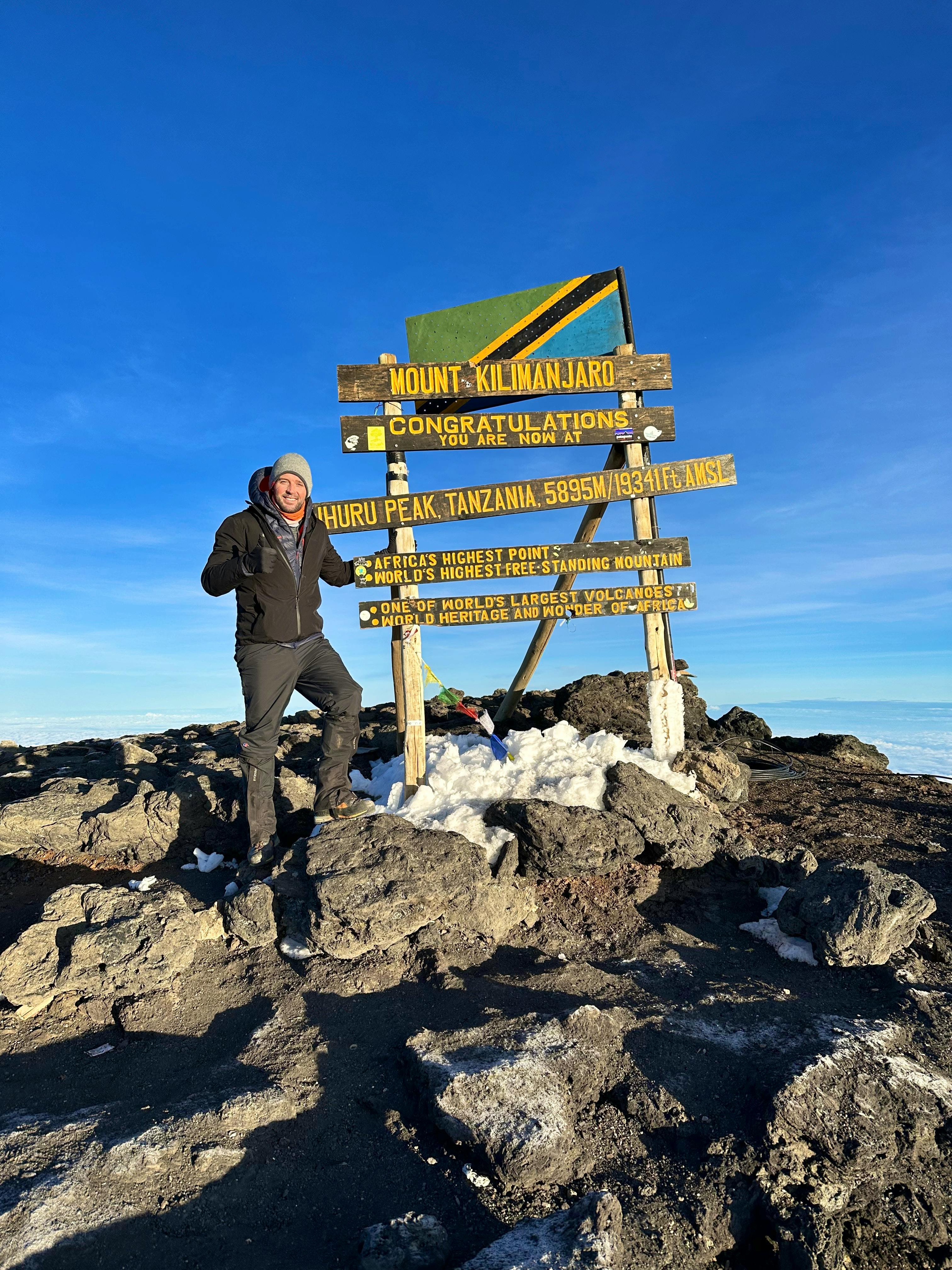
Tips to Make the Most of Your
1) Choose the best route
Kilimanjaro offers various routes, each with its unique features. Select a route that aligns with your preferences, fitness level, and desired experience.
2) Physical Preparation
Kilimanjaro is a demanding climb, and being physically prepared is crucial. Engage in a well-rounded fitness program that includes cardiovascular exercises, strength training, and endurance workouts. Building stamina and strength will contribute to a smoother ascent.
3) Acclimatisation
Altitude is a significant factor in Kilimanjaro. Opt for routes with gradual ascents to allow your body to acclimatise properly. Taking it slow and allowing time for acclimatisation reduces the risk of Kilimanjaro altitude sickness-related issues and enhances your overall experience.
4) Mindful Enjoyment of Scenery
Kilimanjaro offers breathtaking landscapes. Take the time to appreciate the diverse ecosystems, from lush rainforests to the stark beauty of glaciers. Be present in the moment, savouring the unique scenery that Kilimanjaro unfolds at each stage of the climb.
Other Kili Articles
Find your next adventure
Why Skyhook?
Join over 27,000 Skyhook adventurers who've used our platform to book directly with our vetted local guides, at local prices (we never markup).
Expert Local Guides
Experienced local guides, handpicked by us.
Best Prices
Never pay a markup on the local guide's price.
Exclusive Club
Earn loyalty rewards every time you travel.
Great Social Vibes
Small group tours provide a richer experience.
Stellar Feedback
Over 2,800 reviews, average of 4.9/5 stars.





